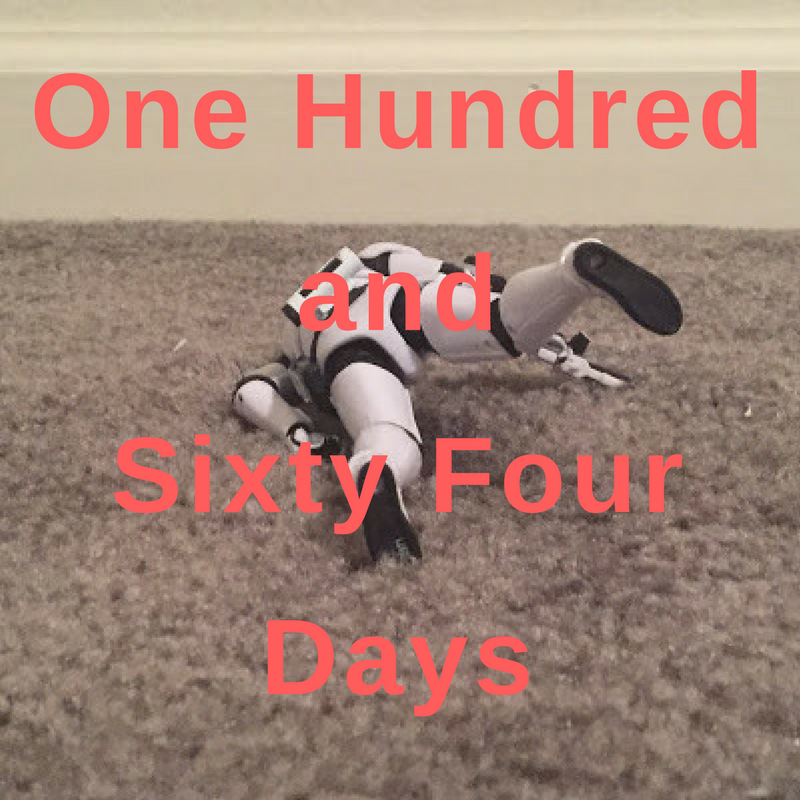How We Will Read Cerebus - Part II

It is highly probable that in terms of its current fanbase and critical esteem
Cerebus the book will end - like Cerebus the aardvark - alone and unloved. Whereas twenty years ago awareness of
Cerebus among the comics-literate was almost ubiquitous - with Sim himself as one of the most vocal figures in the English-language comics community - the series has almost entirely faded from discussion. The recent occurrence of two relatively exhaustive critical exhumations has only underscored an unavoidable fact: no one reads
Cerebus anymore, and the reappraisal was necessary in order to begin the process of deciding whether or not further generations would ever need to return to
Cerebus in any capacity. Oh, some people still read it, but relative to comics' expanding audience, it will remain a decidedly cult proposition for the foreseeable future. A whole generation of comics readers has come up in the world since
Cerebus was relevant, and it's conceivable that many people who seriously engage with comics now can't even remember first-hand a time when
Cerebus was a monthly presence on North American comic stands. The final issue of
Cerebus hit stands a long time ago, and in the space of just the last seven years the industry and art form have changed significantly.
If you were to ask me point-blank whether or not you should read
Cerebus, my honest answer at this late date would be a slightly reluctant, albeit very firm
no. Many, if not most comics readers who haven't already encountered the series at this late date will probably never encounter it in any significant fashion. The books will stay in print for so long as Sim lives, and will probably always retain some small position of honor in many well-stocked comic book stores, in the same manner that a contemporary psychologist might keep a bust of Freud on the shelf, out of a sense of duty already tinged with anachronistic irony. People who come to the book in the future will come upon it as if it were already a relic, a text of primarily archaeological interest that maddeningly alternates between a brilliant explication of the comics form and an impenetrable hate-screed. The parodies, many already dated, will only become increasingly opaque as the years progress.
For all the good in
Cerebus - and we wouldn't be talking about it at all if there wasn't still a considerable degree of good in the book to balance the incontrovertible horror - the price for being able to sift through the rubble of the bad in search of the good is simply more than most people should ever want to pay. As much as I wish I could simply recommend that people read "the good half" or "the good third," the fact is that there is no way in which a selective reading program of
Cerebus could convey the work's depth, breadth or significance. For better or for worse, the questions asked in the first 150 issues of
Cerebus are only answered in the final 150 issues. That the answers turned out to be so painfully, ruthlessly strange remains a singular disappointment.
But the end of
Cerebus does not necessarily mean the end of
Cerebus.
One of the most heartening trends of the last ten-to-fifteen years of comics criticism has been the very gradual assimilation of comics content into academia. We're still in the very early days of this trend, and part of the reason for this is that despite the enthusiastic early adoption of the medium by academics across the English-speaking world, there is not as of yet sufficient institutional consensus as to where exactly comics belong, and how best to incorporate them into existing disciplinary divisions. The profusion of extremely popular first-person narrative memoirs such as
Persepolis,
Fun Home and
American Born Chinese has borne concrete results in terms of providing introductory-level comics texts that can be placed into a wide variety of contexts and find application to a number of different disciplines. But most of these books can be explained and discussed without significant recourse to medium-specific historical context. They work supremely well as pedagogical tools precisely because of their unchallenging approach to their chosen medium. They have, in other words, been adopted so enthusiastically by academia not because of their daring use of form but on account of the alacrity with which they communicate embedded ideas independent of form. While it is not unusual to see more formally daring texts such as
Watchmen and
Jimmy Corrigan on college syllabi, the utilization of these texts in a primarily literary context lessons the degree of medium-specific critique immanent in their pedagogical use.
We don't yet have the kind of institutional support in academia to be able to create a common critical language for texts as far ranging as
Maggots,
Terry and the Pirates and
The Adventures of Obadiah Oldbuck - let alone simply to acknowledge the commonality of these three texts on any existing generic continuum. The discipline of comics studies, whatever it will eventually be called, is still so far in its infancy as to remain barely perceptible. My gut feeling is that this kind of conversation would be best served in the field of Comparative Literature - a portmanteau discipline whose polyglot nature would ostensibly allow for the kind of cross-disciplinary pollination necessary for a field that rightly encompasses parts of Literature, Art History and Cultural Studies while belonging precisely to none. While I have certainly seen a few comics courses taught in the context of Comparative Literature, I am wary as to whether or not the ongoing (and potentially existential) disciplinary roil in that field will allow for the kind of sustained focus necessary to stake sufficient claim to such a seemingly protean field as comics.
Regardless, the current academic climate indicates that sometime within the next 15 to 20 years we will see the formulation of something resembling a more coherent field of "comics studies" within some corner of the humanities. Already you can discern the faint outlines of such trend, with many young hires in English and Comp Lit departments listing "Graphic Novels" somewhere on their CVs. We haven't yet achieved the kind of critical mass that would lead to the splintering of a distinctive discipline, in the same way that Film Studies formed in the mid-century. At this point, however, and despite these obstacles, I would argue that the preponderance of evidence points to this formation as less a possibility than an inevitability. Arguably, the one factor standing in the way of any generic coalescence is the relative paucity of theoretical models within the field - and no,
Understanding Comics doesn't really count, although that will probably remain popular for a long time to come. (I would argue that the greatest current obstacle to this type of theorization is the reliance among comics critics on models of close reading that depend on narrative-and-text based models of reading - i.e., the way that literature PhDs are taught to read texts, as opposed to the way Art Historians are taught to interpret visual culture. Comics will remain partially opaque to theoreticians unless and until they can discover a cross-disciplinary model that successfully hybridizes these approaches.) When we begin to see strong theoretical readings of the medium in significant numbers in the academic press, half the work of disciplinary formation will have been done: from that point, it's only a matter of waiting until the scattering of proto-"Comics Studies" academics organize themselves around these models.
Once this occurs, the first business of the academics will be to historicize comics history into coherent genealogies. This will require the formulation of more holistic historical narratives to describe the medium's aesthetic and economic origins. The dominant narrative among fans of "serious" comics in the English-speaking world for the past two or three decades has been the gradual evolution of form away from the stultifying constraints of (extremely familiar) traditional generic restriction - in other words, the emancipation of medium from the shackles of genre. This has been a great narrative by which to understand the formation of a contemporary class of "graphic novelists" who exist separately and independently from the realms of "mainstream" adventure comics and newspaper strips, and who have escaped the inexorable illogic of the direct market as a primary means of comics distribution. This is at least partially the catalyst for the pervasive "Team Comics" rhetoric that engulfed the field in the late nineties and early aughts: a bunker mentality born out of a shared experience of communal solidarity in the face of economic retrenchment and stultifying generic hegemony. It was common to define comics as the province of a small but tightly-knit community that had weathered decades of the worst conceivable circumstances and survived to see cartooning gain culture-wide traction as an increasingly legitimate medium.
Anyone who comes to comics from this point forward will have to do the hard work of reconstructing the medium's historical trajectory. What this means in practice is that all of the particulars of economic production and distribution in the medium will have to be exhumed and reexamined. Any history of Crumb will require an explanation of what, exactly, the transgressive artists of the late sixties were rebelling against - not merely the cultural politics of the sixties but the shape of comics as a mass media. Any close reading of
Love & Rockets will have to in some fashion acknowledge that the series was originally serialized in magazine form primarily through a distribution channel known as the direct market, and the same goes for other already-canonized artists such as Clowes, Ware, Burns, Seth, and Brown. (And, of course, there will be alternate narratives written for every alternate distribution channel.) It will be necessary when discussing comics history at the end of the twentieth century to acknowledge the dominance of super-hero books, and the ways in which the emergence of alternative genres and economic models were always conceptualized through the formation of rhetorical distance from the supposed "mainstream" of corporate-owned superhero properties. Just the term "mainstream," with all its strange and historically-specific connotations, will have to be unpacked for future readers who will come to comics without any prior knowledge of just how this generic opposition shaped comics discourse for multiple generations of readers.

Imagine, then, a series that ran from the late seventies through to the early twenty-first century, shipping monthly and taking as its explicit subject-matter the evolution and transformation of the medium in this unique transitional period.
Imagine a series whose defining relationship to its historical moment is that of parody, and which provides through this parody an incessant commentary on the hoariest and most inane indulgences of surrounding comics culture. It is just this generic contextualization that future critics will regard as an invaluable record of the most changeable and disposable aspects of an unimaginably strange commercial culture, an often embarrassing commercial culture that will need to be reconstructed at least in part as a predicate for any comprehensive historiography of comics.*
Imagine a series constructed along the lines of an eclectic personal journal, providing not merely an extended comics narrative but - in the form of copious backmatter - an ongoing critical engagement with itself as well as the larger realities of economic and ethical considerations within the quickly changing medium.
Imagine one step further, that this series also represents one of the most sustained autobiographical statements thus far produced in the medium's history, the record not merely of one man's
Zelig-like ability to appear and reappear throughout some of the medium's most contentious and crucial intersections, but of his gradual estrangement and painful separation from the very same independent comics culture that he, in part, helped to create. With a few decades' perspective, the sheer horror of the series' final years will come to be seen less as the gradual derangement of a single individual than as symptomatic of the final stage of the medium's painful and protracted adolescence.
For better and for worse,
Cerebus is the grand narrative of comics throughout our lifetime. Dave Sim began as just another amateur zine publisher, became a firebrand and a rallying point for the absolute moral rights of creators, before descending into painful self-parody and obsolescence. The series will fade from memory perhaps within our own lifetime - we already see this process in effect today, the inevitable and justifiable reaction to Sim's willful abjuration of modernity. But it
will be rediscovered, and it
will in time come to be seen as one of the most crucial primary documents of these, our strangest and most interesting of times.
* There is one specific point about parody in reference to
Cerebus that I have been trying to fit in for a while but which just never seemed to fit into the main body of any article. There is an assumption that the parodies featured in
Cerebus will only hurt the work's long-term reputation because most of the books being parodied are simply not worth remembering in any form and will only serve as embarrassing obstacles for any potential future readers. R. Fiore, in the online comments for an excerpt of
Tim Kreider's Journal article, arguses this position in as succinct a fashion as possible when
he states that: "If parody is going to endure then it has to parody subjects that are going to endure." With all due respect to someone who was written about comics in a far more intelligent fashion and for much longer than myself, I have to say that this statement could not be more wrong. Not only is it factually wrong, but it would be far easier to argue the opposite point: parody often endures because, not despite, of the transience of its subject.
For proof of this I would point to some of the founding books of modern European literature:
The Canterbury Tales,
Don Quixote,
Gulliver's Travels,
Candide. All of them are in some fashion parodies of other books, general literary trends, philosophical schools, or political ideologies.
Don Quixote survives despite the fact that the vast corpus of popular chivalric literature against which Cervantes inveighed has almost entirely disappeared into the dire realms of graduate school and post-doc research. Most of the genres that Chaucer utilized in the
Tales were vastly popular for hundreds of years across Europe, and yet I can say with absolutely no fear of contradiction that (for instance) the only penitence manual still in general circulation in 2011 remains "The Parson's Tale." (Of course, I would argue that "The Parson's Tale" isn't quite a parody in the same fashion as "The Knight's Tale." It's complicated position within the
Tales hinges in part on its status as a rebuttal to the preceding satire. But it remains a kind of parody because it utilizes the form of the penitence manual to achieve a literary effect beyond merely the salvation of individual souls.)
Far,
far more people have read and will continue to read
Candide than have ever read Leibniz, and although Leibniz retains a fairly high reputation among historians of philosophy far more people know the man's ideas through Voltaire's satirical mirror than will ever go further beyond the footnotes in the Penguin Classic paperback. In all cases there are a number of reasons why the original genres and ideas pilloried in these texts have faded from view, but there remains one overriding, inescapable fact that frames our understanding of these books: people over the course of many centuries have decided in no uncertain fashion that the parody is far more interesting than the object of parody. Hell, it's even possible that more people read
Shamela than
Pamela, and many people still read
Pamela. (OK, many college students, but I would argue that they're people too.)
Cerebus is, obviously, a lesser work than
Don Quixote or
The Canterbury Tales (I shouldn't need to say that), but for future scholars looking to reconstruct the shape of comics culture and the interplay between popular and independent publishing modes,
Cerebus will serve a similar function in helping to contextualize our strange era.
Spawn will almost certainly
not survive to become an object of serious critical investigation, but
Spawn will retain its significance as a historical artifact for anyone wishing to understand comics in these last few decades. If my assessment is correct and
Cerebus finds a fertile afterlife as a subject of great scholarly interest, one of the most important aspects of the work for future scholars will be
precisely that aspect that seems least interesting to current readers, with their first-hand knowledge of the historical conditions of the comics marketplace: the constant riffing on and vivisection of disposable bits of comics ephemera.










